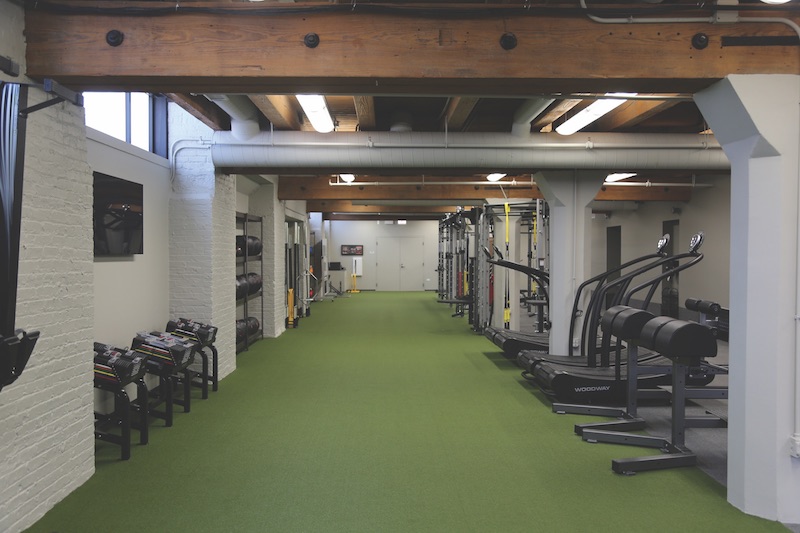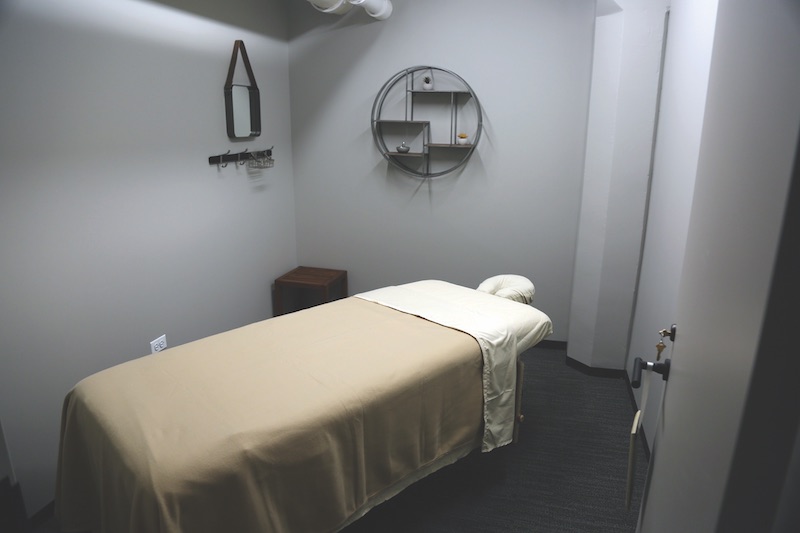The latest trend in integrated healthcare and wellness is the emergence of facilities that track and enhance human performance at the intersection of medicine, fitness, nutrition, and recovery.
At least one startup, Chicago-based Shift, is testing the public’s fervor for one-stop-shop services that combine to minimize acute and chronic pain, illness, and disease by encouraging everyday healthy living.
Until recently, human performance has mostly been the province of professional sports teams. For example, Perkins+Will has designed the 300,000-sf, nine-story sports therapy and research center that, when completed in early 2018, will be part of the Dallas Cowboys’ 91-acre headquarters campus in Frisco, Texas. The center—a collaboration among the Cowboys, healthcare provider Baylor Scott & White, and Blue Star Sports—will include surgical, emergency care, training, and rehabilitation services.
So-called “human performance facilities” are finding their way onto college campuses, too. In the summer of 2018, McNeese State University, Lake Charles, La., is scheduled to open its $41 million Health and Human Performance Education Complex.
Richard Rhodan, the university’s Director of Facilities and Plant Operations, says the 145,000-sf facility—designed by Crawford Architects and Randy M. Goodloe Architect, and built by Alfred Palma LLC—will set aside 22,000 sf for classrooms, labs, and offices for the college’s health and human performance program, whose enrollment has increased by 20% since 2010. Another 8,500 sf feet will be shared space, where students get hands-on training in hydrotherapy, kinesiology, and other sports-related recovery procedures.
In a recent blog on BD+C’s website (www.BDCnetwork.com/JWilliamsBlog), Jennifer Williams, an Interior Designer with P+W, observed that human performance facilities for “common folk” are popping up around the country. These facilities combine diagnostic and clinical services with “performance centers” that rely on technology and coaching to help individuals and teams reach their optimum health and fitness levels.
 Courtesy Shift.
Courtesy Shift.
In Chicago, Shift—a two-floor, 14,000-sf facility, which opened on February 15—focuses on prevention and quality of life through medical, nutrition, fitness, coaching, and recovery programs that get members directly involved in their own healthy choices and courses of action. Membership ranges from $3,000 to $8,000 annually for three tiers of health and wellness plans:
- Shift Life helps members define their health goals and create habits for healthy living. This level includes a yearly physical and 12 months of direct primary medical care, plus access to the facility’s amenities and equipment.
- Shift Extension offers all of the Shift Life services, but targets Chicagoans who travel a lot and probably won’t use the facility as their primary place of fitness and recovery. These members have access to virtual coaching sessions. Extension members also have access to a primary care physician within the facility, and a one-day-per-month pass for fitness and recovery activities.
- Shift Primary Care provides high-quality, easily accessible personalized medical care. The facility’s medical staff strives to build a long-term relationship with members.
 Courtesy Shift.
Courtesy Shift.
“Coaching is at the heart of the Shift experience,” says Dr. Ari Levy, Shift’s Founder and CEO, an internal medicine specialist who has experience as a personal trainer and nutritionist.
His conception of Shift can be traced to his college days, when, he says, “I noticed that the fitness and medical worlds weren’t necessarily coming together. Today, we know more than ever about how the mind and body work, yet we still have chronic diseases.”
Levy says that his real estate and project team partners—notably CBRE, CannonDesign, and the DiCosola Group—were instrumental in developing Shift’s design. “We helped them organize Shift’s spaces because they weren’t exactly sure what the overall tone would be,” says Robert Benson, Principal/Design Leader in CannonDesign's Chicago office.
What Levy wanted was smooth design transitions from room to room within the facility. For example, the entrance and café on the top floor needed to be “warm and inviting,” with glass doors, translucent walls, and a reclaimed wood table that conveyed “a presence of comfort.”
A 26-foot-long, 13-foot-wide staircase, whose steps are covered with a turf and rubber motif, leads to the facility’s medical offices, which Levy describes as “safe and secure, but not clinical.”
“Ari’s idea is, ‘How can we treat people who are healthy?’” says Benson, a BD+C 40 Under 40 honoree. “This is an incredible opportunity for them, and I’m surprised something like this hasn’t happened sooner.”
 Courtesy Shift.
Courtesy Shift.
Related Stories
Intelligent Lighting | Feb 13, 2023
Exploring intelligent lighting usage in healthcare, commercial facilities
SSR's Todd Herrmann, PE, LEEP AP, explains intelligent lighting's potential use cases in healthcare facilities and more.
Giants 400 | Feb 9, 2023
New Giants 400 download: Get the complete at-a-glance 2022 Giants 400 rankings in Excel
See how your architecture, engineering, or construction firm stacks up against the nation's AEC Giants. For more than 45 years, the editors of Building Design+Construction have surveyed the largest AEC firms in the U.S./Canada to create the annual Giants 400 report. This year, a record 519 firms participated in the Giants 400 report. The final report includes 137 rankings across 25 building sectors and specialty categories.
Giants 400 | Feb 6, 2023
2022 Reconstruction Sector Giants: Top architecture, engineering, and construction firms in the U.S. building reconstruction and renovation sector
Gensler, Stantec, IPS, Alfa Tech, STO Building Group, and Turner Construction top BD+C's rankings of the nation's largest reconstruction sector architecture, engineering, and construction firms, as reported in the 2022 Giants 400 Report.
Healthcare Facilities | Jan 31, 2023
How to solve humidity issues in hospitals and healthcare facilities
Humidity control is one of the top mechanical issues healthcare clients face. SSR's Lee Nordholm, PE, LEED AP, offers tips for handling humidity issues in hospitals and healthcare facilities.
Augmented Reality | Jan 27, 2023
Enhancing our M.O.O.D. through augmented reality therapy rooms
Perkins Eastman’s M.O.O.D. Space aims to make mental healthcare more accessible—and mental health more achievable.
Hospital Design Trends | Jan 19, 2023
Maximizing access for everyone: A closer look at universal design in healthcare facilities
Maria Sanchez, Interior Designer at Gresham Smith, shares how universal design bolsters empathy and equity in healthcare facilities.
Fire and Life Safety | Jan 9, 2023
Why lithium-ion batteries pose fire safety concerns for buildings
Lithium-ion batteries have become the dominant technology in phones, laptops, scooters, electric bikes, electric vehicles, and large-scale battery energy storage facilities. Here’s what you need to know about the fire safety concerns they pose for building owners and occupants.
Healthcare Facilities | Dec 20, 2022
4 triage design innovations for shorter wait times
Perkins and Will shares a nurse's insights on triage design, and how to help emergency departments make the most of their resources.
Healthcare Facilities | Dec 20, 2022
Designing for a first-in-the-world proton therapy cancer treatment system
Gresham Smith begins designing four proton therapy vaults for a Flint, Mich., medical center.
Cladding and Facade Systems | Dec 20, 2022
Acoustic design considerations at the building envelope
Acentech's Ben Markham identifies the primary concerns with acoustic performance at the building envelope and offers proven solutions for mitigating acoustic issues.

















